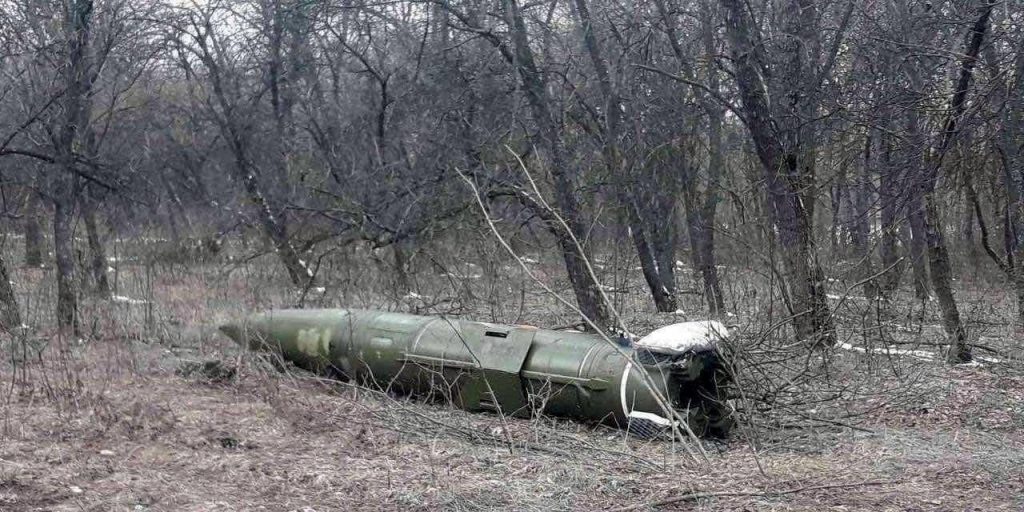- The mystery munitions are decoys meant to trick air-defense radars and heat-seeking missiles.
- They are each about a foot long and shaped like a dart with an orange tail, American intelligence officials say.
- One expert called the discovery of these decoys an "intelligence bonanza" for the West.
Russia has deployed a mystery munition in Ukraine that's stumped ballistic experts.
The munitions are decoys meant to trick air-defense radars and heat-seeking missiles, the New York Times reported, and are released from Iskander-M short-range ballistic missiles. They are each about a foot long and shaped like a dart with an orange tail, American intelligence officials say.
The devices produce radio signals to confuse enemy radars attempting to locate the missiles, and they also contain a heat source to attract other missiles.
—CAT-UXO (@CAT_UXO) March 5, 2022
Experts were confused by the munitions, which began circulating on social media a few weeks ago, many mistaking them for bomblets from cluster weapons, reported the Times' John Ismay, a US Navy veteran who was qualified in explosive ordnance disposal. They are similar to Cold War-era decoys known as "penetration aids" that were designed to bypass antimissile systems in order to reach their targets.
The Iskander is a short-range ballistic missile system developed soon after the fall of the Soviet Union and has a range of more than 400km, or roughly 250 miles.
Jeffrey Lewis, a nonproliferation professor at the Middlebury Institute of International Studies in Monterey, California, called the discovery of these munitions an "intelligence bonanza" for the West. He said it is rare to see technical information about adversaries' ballistic countermeasures, as their effectiveness is drastically reduced when their secrecy is compromised.
"Decoys like this can be effective in terms of fooling radars or infrared seekers on kill vehicles, but they need to be kept secret," Lewis told Insider. "Because if your adversary or if the defender has access to the countermeasures, then they can adapt their missile defense systems so that they're not fooled."
To Lewis, it's a puzzle why Russia would use these decoys against Ukraine, which he says does not have the military capabilities to successfully shoot down Iskander missiles.
"It's a very curious decision by the Russians," he said. "In using missiles with these decoys, they're really compromising their own ability to defeat much more sophisticated missile defenses that the United States and other NATO countries might use."
